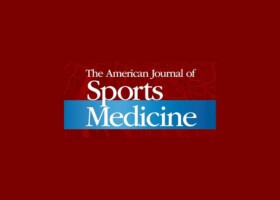
Authors:
Philip-C. Nolte, MD, MA, Bryant P. Elrick, MSc, Justin W. Arner, MD, T.J. Ridley, MD, Thomas E. Woolson, BS, Anna-K. Tross, MD, Kaare S. Midtgaard, MD, Peter J. Millett, MD, MSc
Abstract:
Background:
When comprehensive arthroscopic management (CAM) for glenohumeral osteoarthritis fails, total shoulder arthroplasty (TSA) may be needed, and it remains unknown whether previous CAM adversely affects outcomes after subsequent TSA.
Purpose:
To compare the outcomes of patients with glenohumeral osteoarthritis who underwent TSA as a primary procedure with those who underwent TSA after CAM (CAM-TSA).
Study Design:
Cohort study; Level of evidence, 3.
Methods:
Patients younger than 70 years who underwent primary TSA or CAM-TSA and were at least 2 years postoperative were included. A total of 21 patients who underwent CAM-TSA were matched to 42 patients who underwent primary TSA by age, sex, and grade of osteoarthritis. Intraoperative blood loss and surgical time were assessed. Patient-reported outcome (PRO) scores were collected preoperatively and at final follow-up including the American Shoulder and Elbow Surgeons (ASES) score, Single Assessment Numeric Evaluation (SANE), shortened version of Disabilities of the Arm, Shoulder and Hand (QuickDASH), 12-Item Short Form Health Survey Physical Component Summary (SF-12 PCS), visual analog scale, and patient satisfaction. Revision arthroplasty was defined as failure.
Results:
Of 63 patients, 56 of them (19 CAM-TSA and 37 primary TSA; 88.9%) were available for follow-up. There were 16 female (28.6%) and 40 male (71.4%) patients with a mean age of 57.8 years (range, 38.8-66.7 years). There were no significant differences in intraoperative blood loss (P > .999) or surgical time (P = .127) between the groups. There were 4 patients (7.1%) who had failure, and failure rates did not differ significantly between the CAM-TSA (5.3%; n = 1) and primary TSA (8.1%; n = 3) groups (P > .999). Additionally, 2 patients underwent revision arthroplasty because of trauma. A total of 50 patients who did not experience failure (17 CAM-TSA and 33 primary TSA) completed PRO measures at a mean follow-up of 4.8 years (range, 2.0-11.5 years), with no significant difference between the CAM-TSA (4.4 years [range, 2.1-10.5 years]) and primary TSA (5.0 years [range, 2.0-11.5 years]) groups (P = .164). Both groups improved significantly from preoperatively to postoperatively in all PRO scores (P < .05). No significant differences in any median PRO scores between the CAM-TSA and primary TSA groups, respectively, were seen at final follow-up: ASES: 89.9 (interquartile range [IQR], 74.9-96.6) versus 94.1 (IQR, 74.9-98.3) (P = .545); SANE: 84.0 (IQR, 74.0-94.0) versus 91.5 (IQR, 75.3-99.0) (P = .246); QuickDASH: 9.0 (IQR, 3.4-27.3) versus 9.0 (IQR, 5.1-18.1) (P = .921); SF-12 PCS: 53.8 (IQR, 50.1-57.1) versus 49.3 (IQR, 41.2-56.5) (P = .065); and patient satisfaction: 9.5 (IQR, 7.3-10.0) versus 9.0 (IQR, 5.3-10.0) (P = .308).
Conclusion:
Patients with severe glenohumeral osteoarthritis who failed previous CAM benefited similarly from TSA compared with patients who opted directly for TSA.
You may request the full study HERE
You may request access via AOSSM here:
